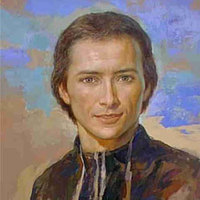Marist College History: Marist Brothers as Builders Champagnat Portrait
Item
Description
The Brothers were founded in the country district outside Lyons, France, in what could only be considered very hilly land where the people eked out a marginal existence. When Saint Marcellin Champagnat decided something needed to be done or get built, he relied first on his available resources not on a fund raising drive. The prime example of this was the mother house at St. Genis-Laval. Except for several skilled masons, this was built almost entirely by the brothers. They carried the rocks, mixed the mortar, and chipped out an enormous rock ledge (sans dynamite) to provide room for the building which was tucked between the river Gier and the ledge.
Around 1905, there was a heavy influx into America of French brothers who had been expelled for religious reasons. Champagnat's spirit of independence and resourcefulness carried over to Poughkeepsie after the Brothers purchased the Bech and McPherson properties, both of which were in ramshackle condition. Using their own labor, they added extensions to the McPherson building and to the east and west sides of St. Peter's stone house. They built two long bungalows in 1912 to be used as temporary dormitories and a wood shop, placed an additional third floor on the Bech house, built chicken coops, a silo, and some fruit cellar caves (caveaus). The results were hardly architectural masterpieces - they were the product of unskilled labor and amateur architects - but they worked and stayed within limited budgets.
Around 1905, there was a heavy influx into America of French brothers who had been expelled for religious reasons. Champagnat's spirit of independence and resourcefulness carried over to Poughkeepsie after the Brothers purchased the Bech and McPherson properties, both of which were in ramshackle condition. Using their own labor, they added extensions to the McPherson building and to the east and west sides of St. Peter's stone house. They built two long bungalows in 1912 to be used as temporary dormitories and a wood shop, placed an additional third floor on the Bech house, built chicken coops, a silo, and some fruit cellar caves (caveaus). The results were hardly architectural masterpieces - they were the product of unskilled labor and amateur architects - but they worked and stayed within limited budgets.
Type
painting
